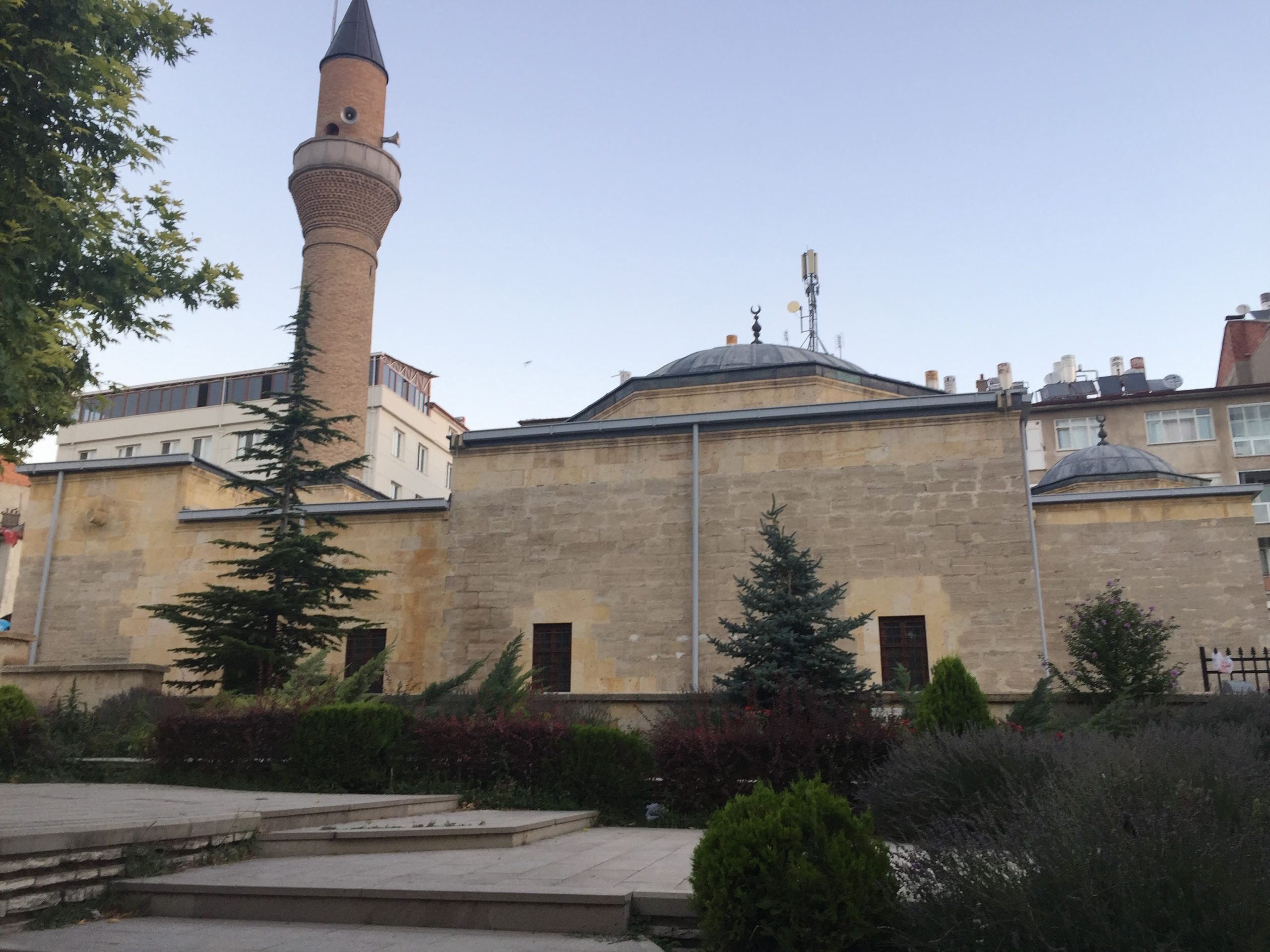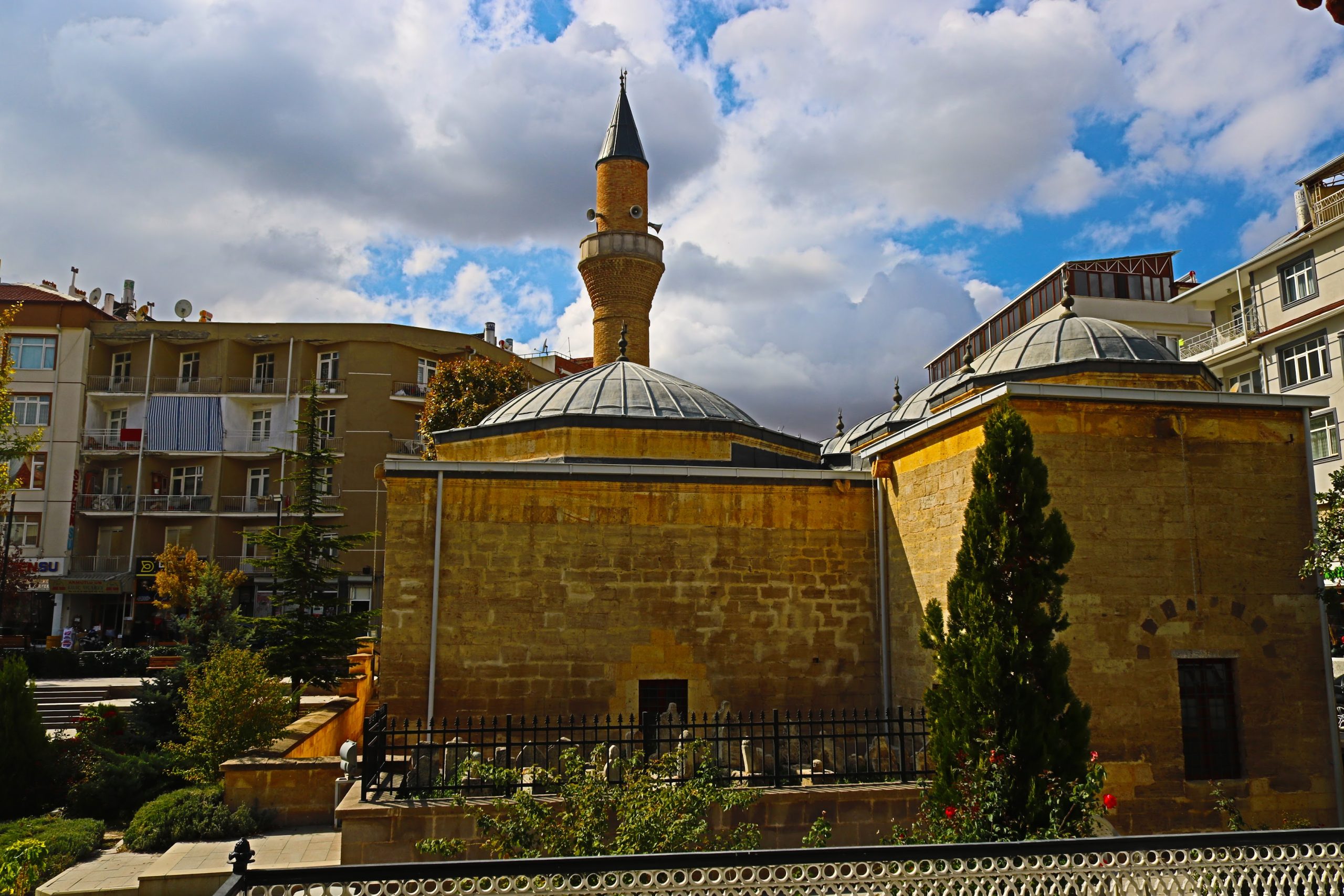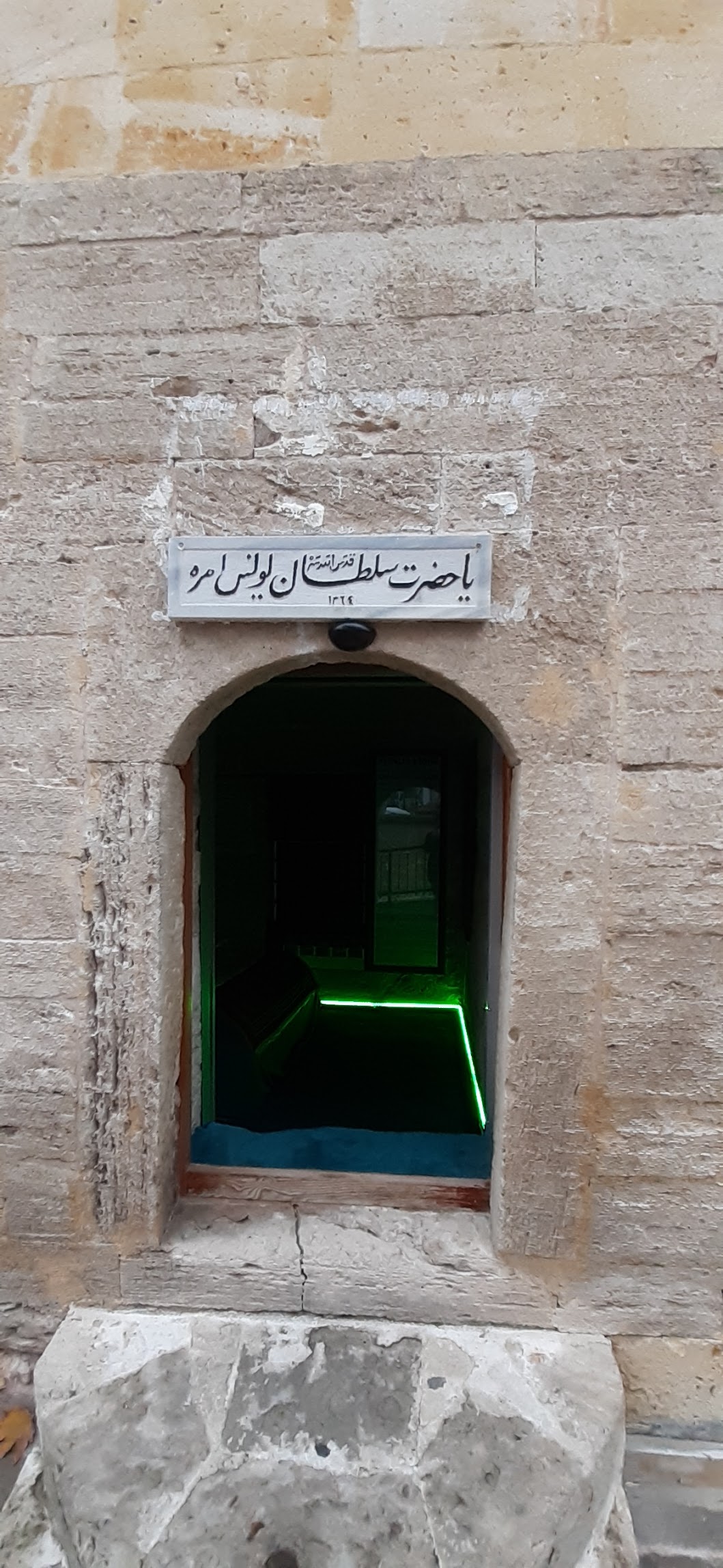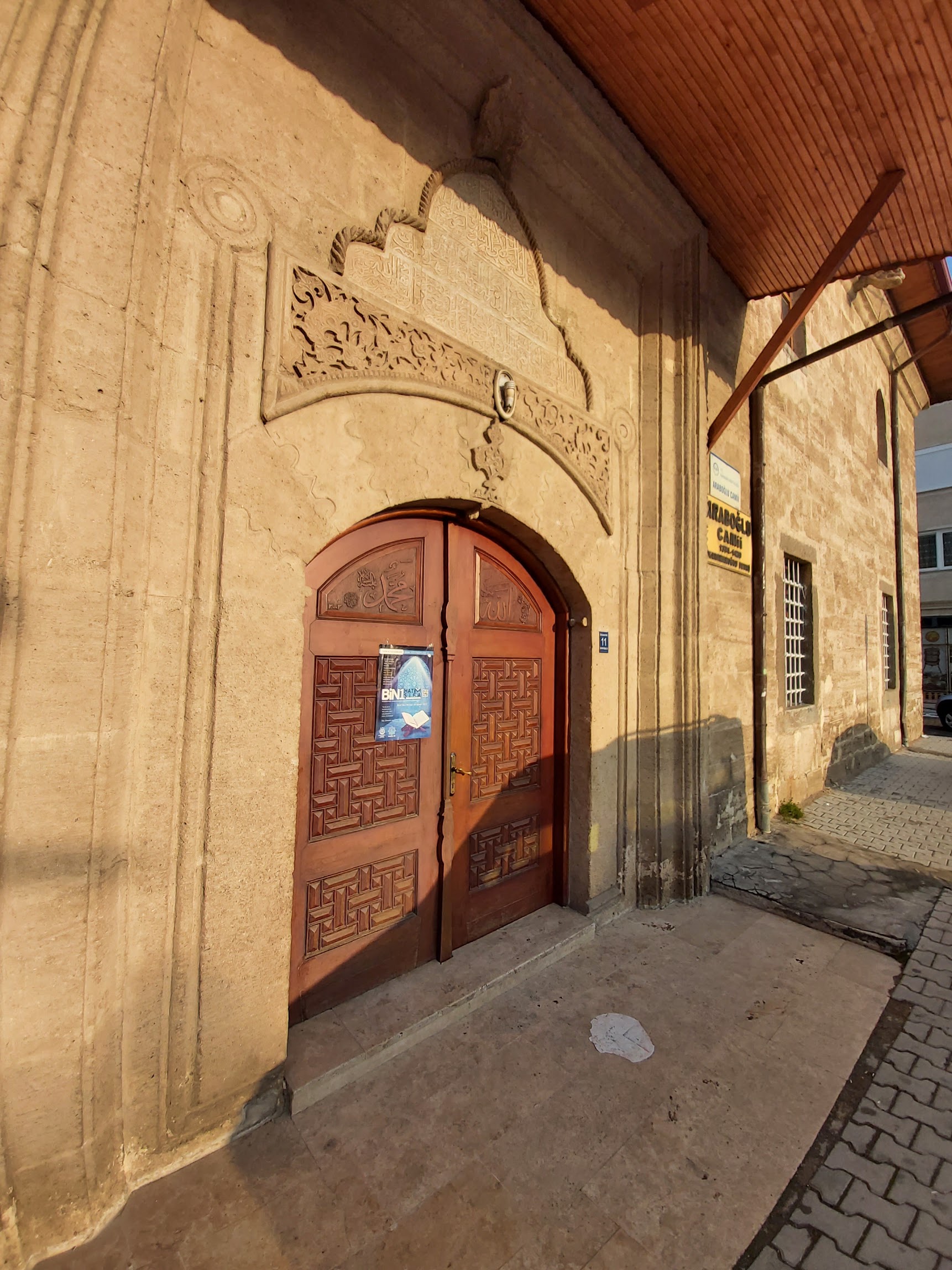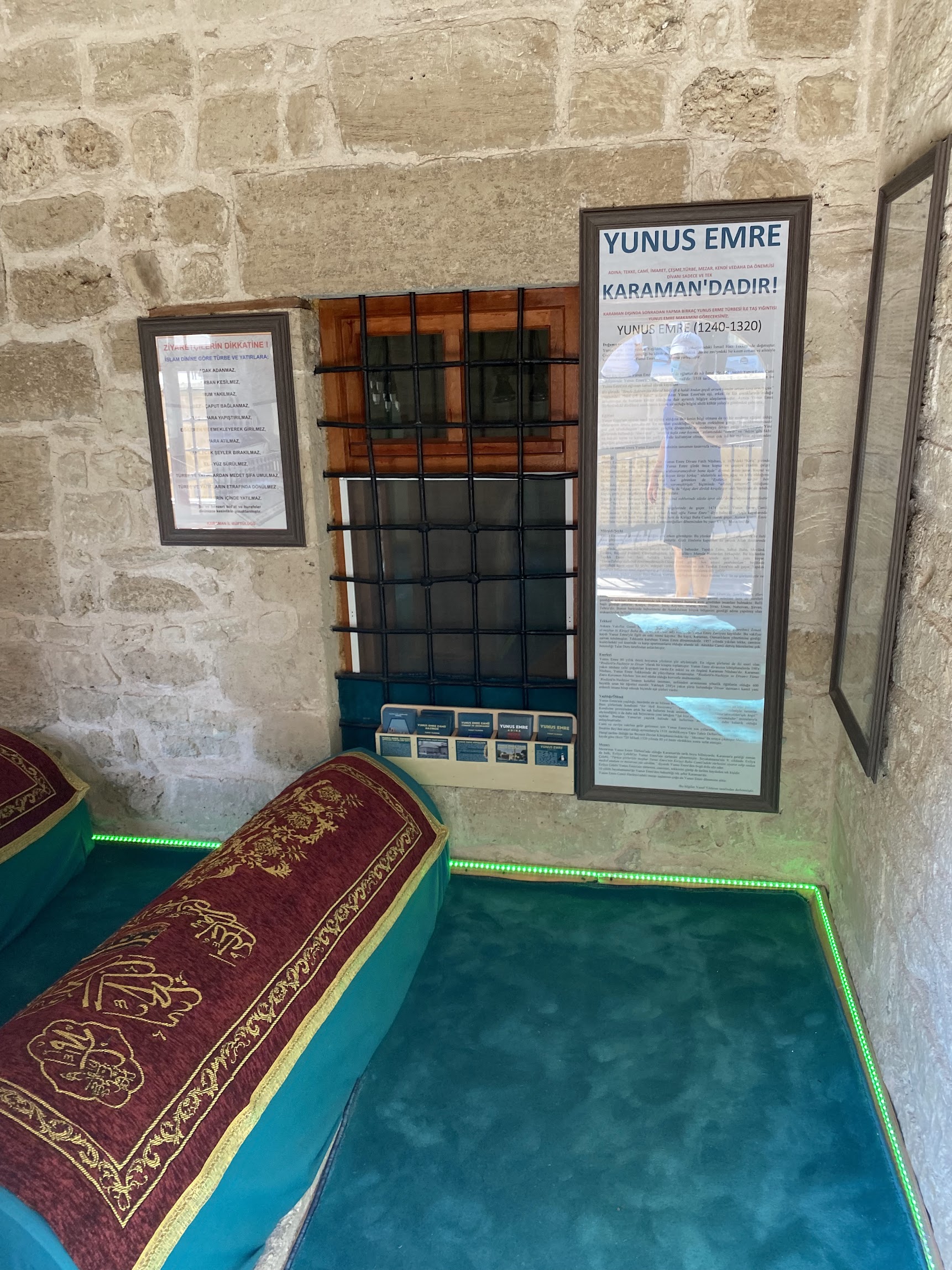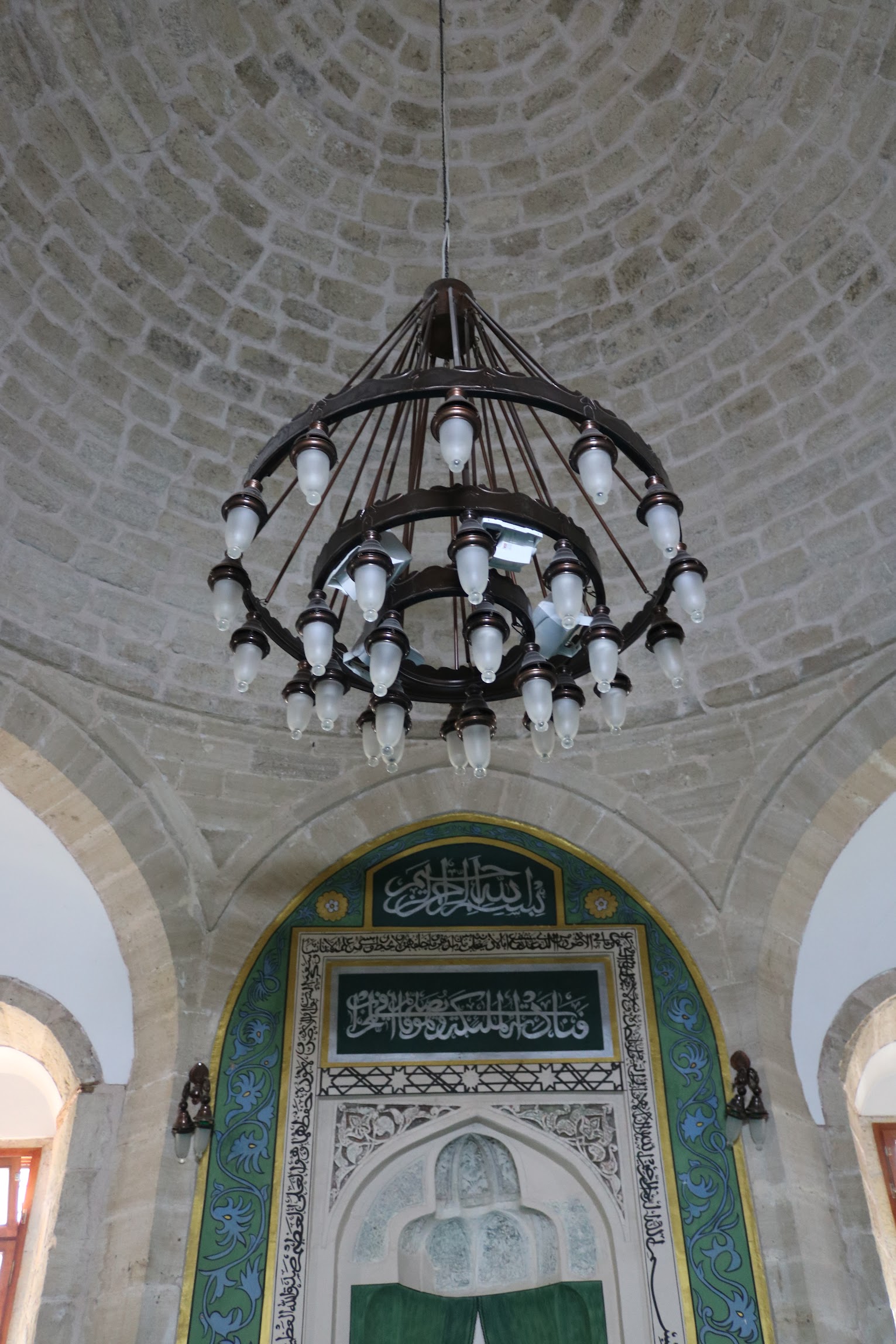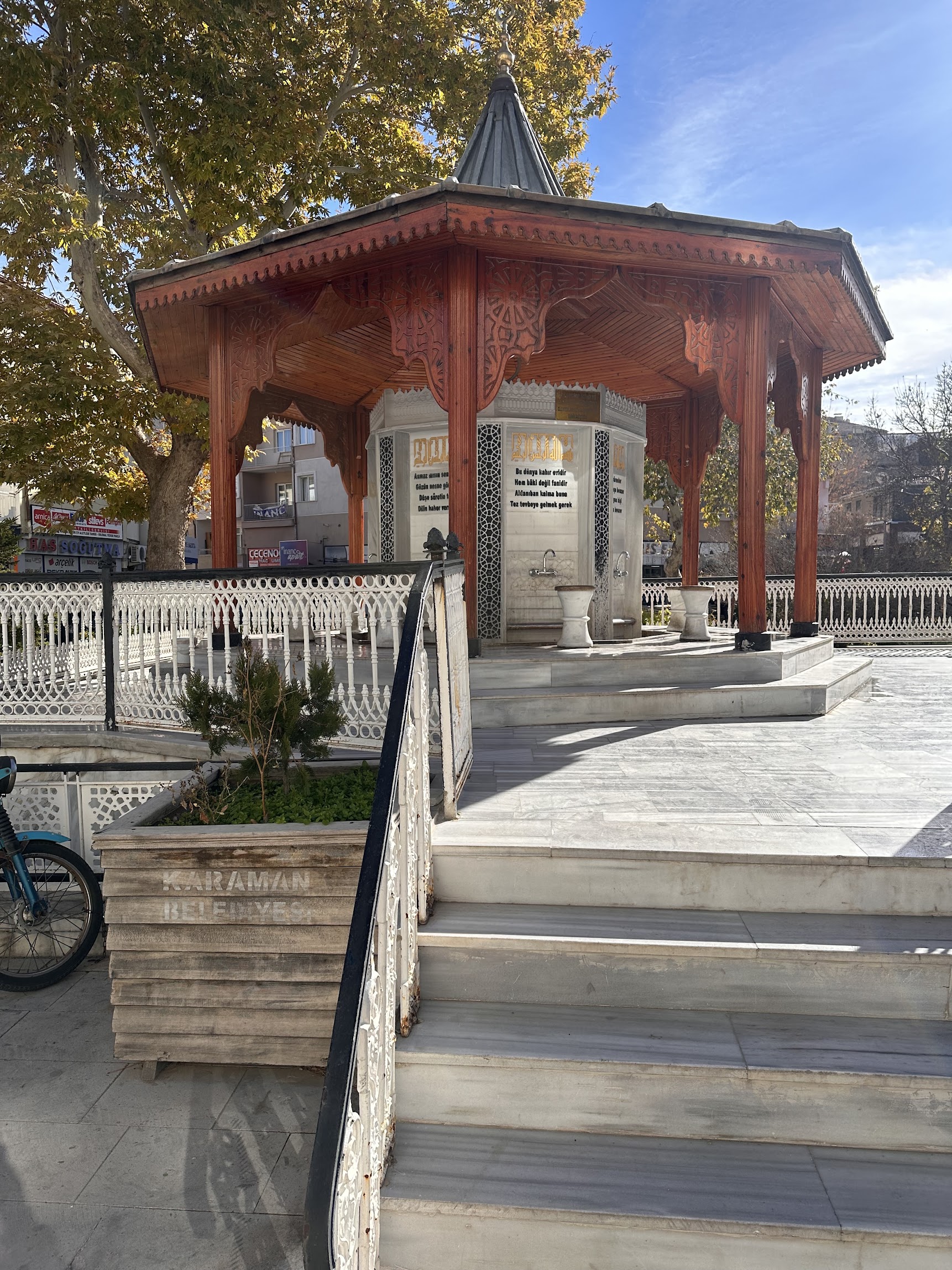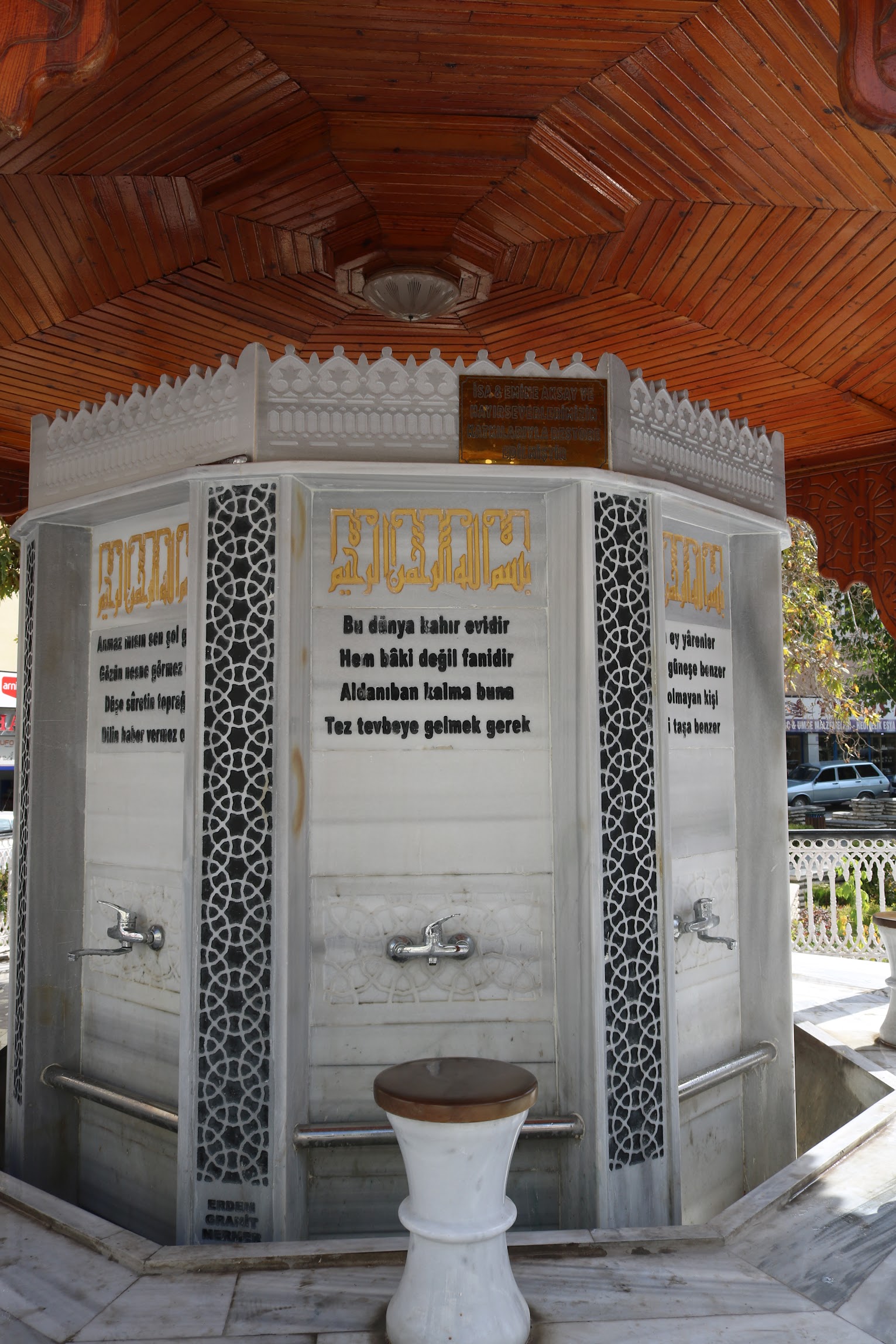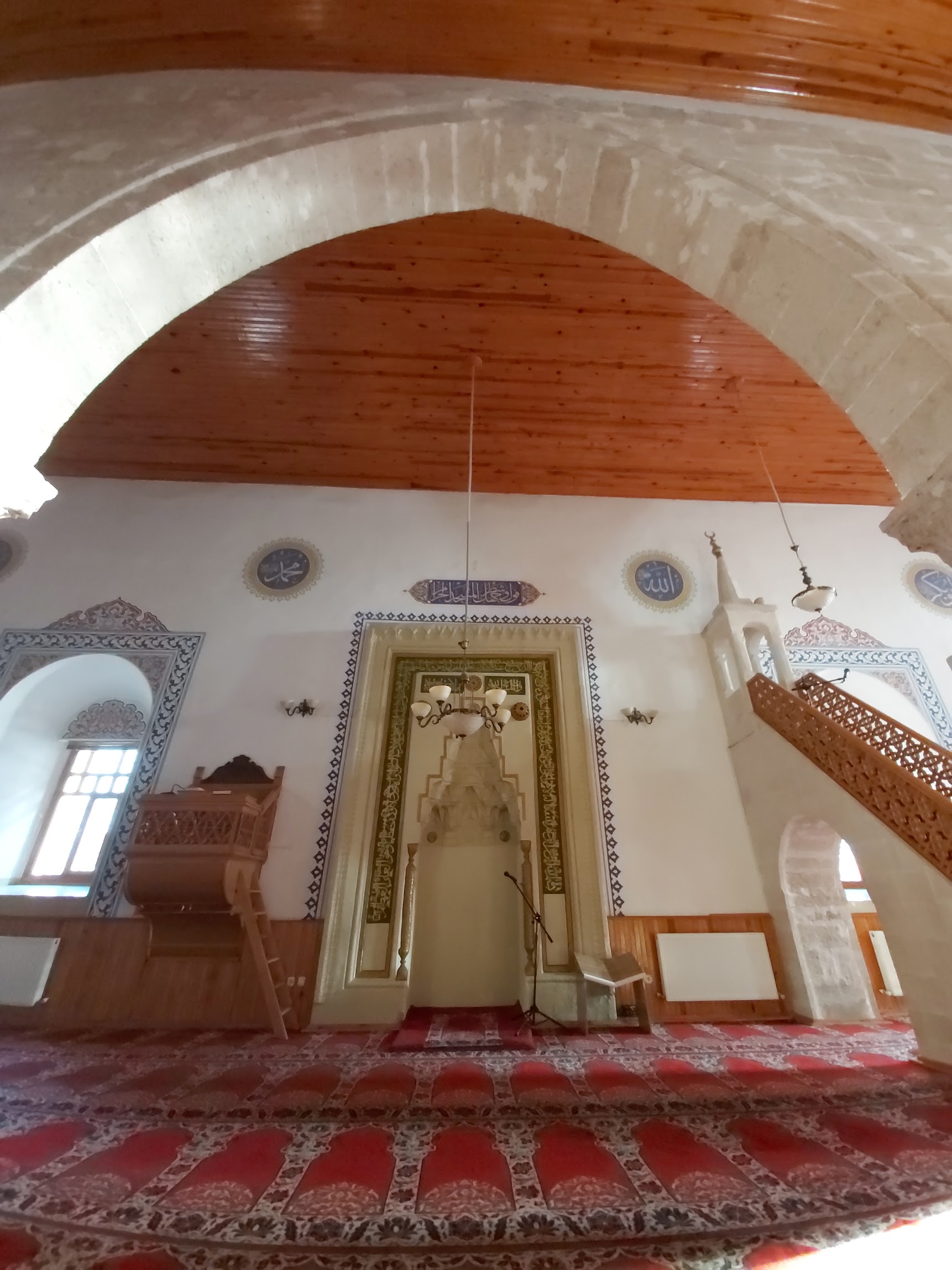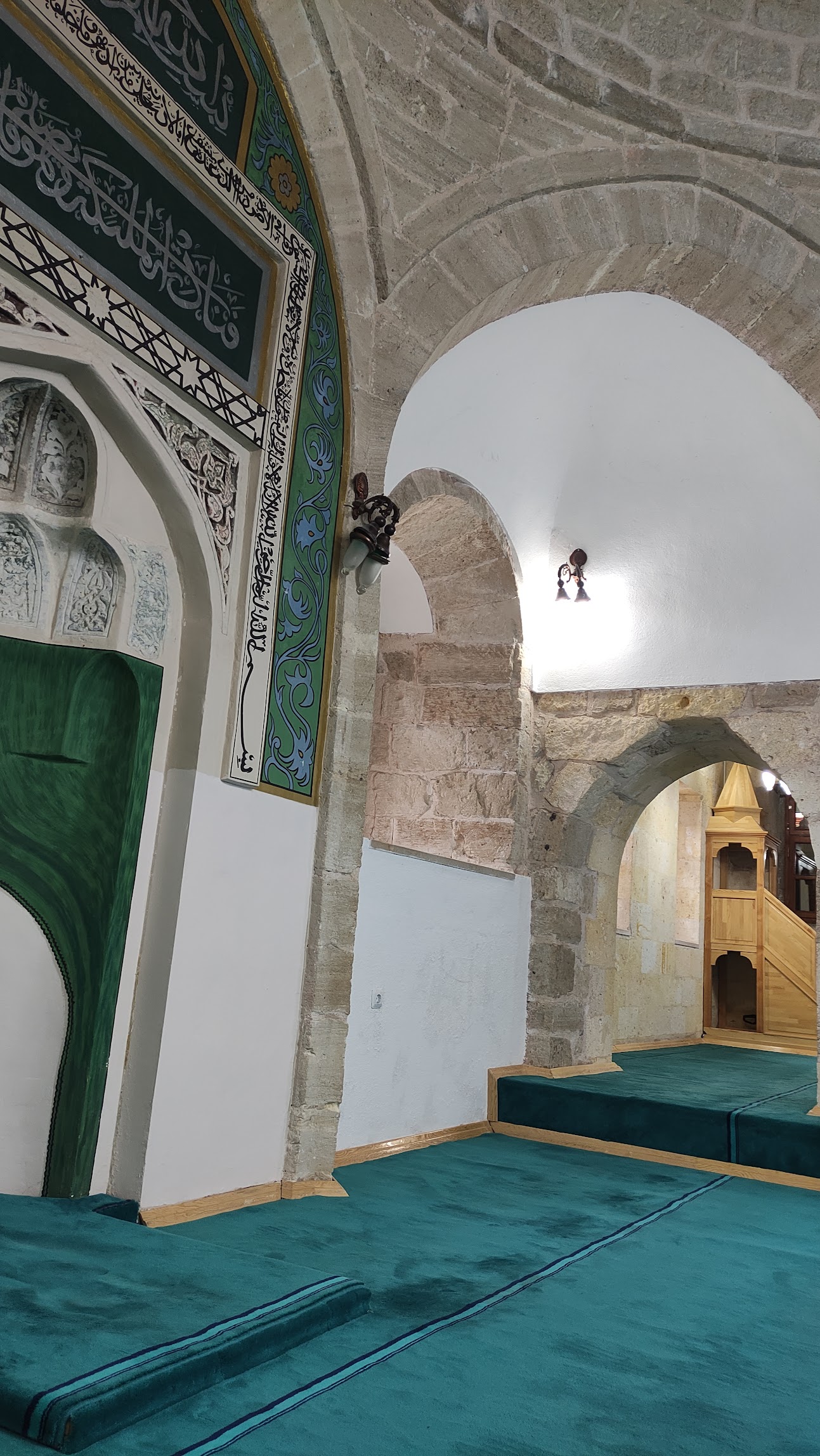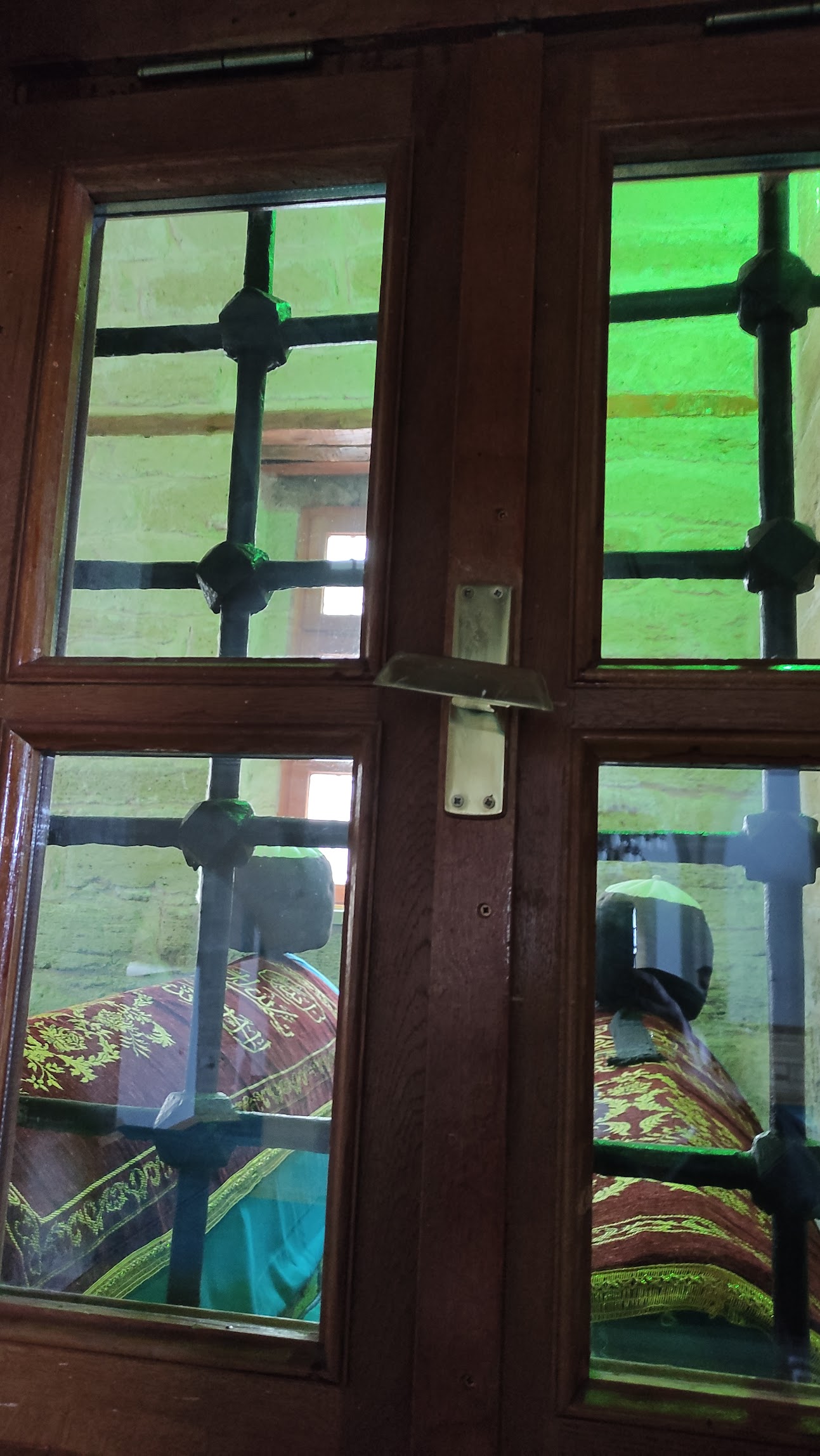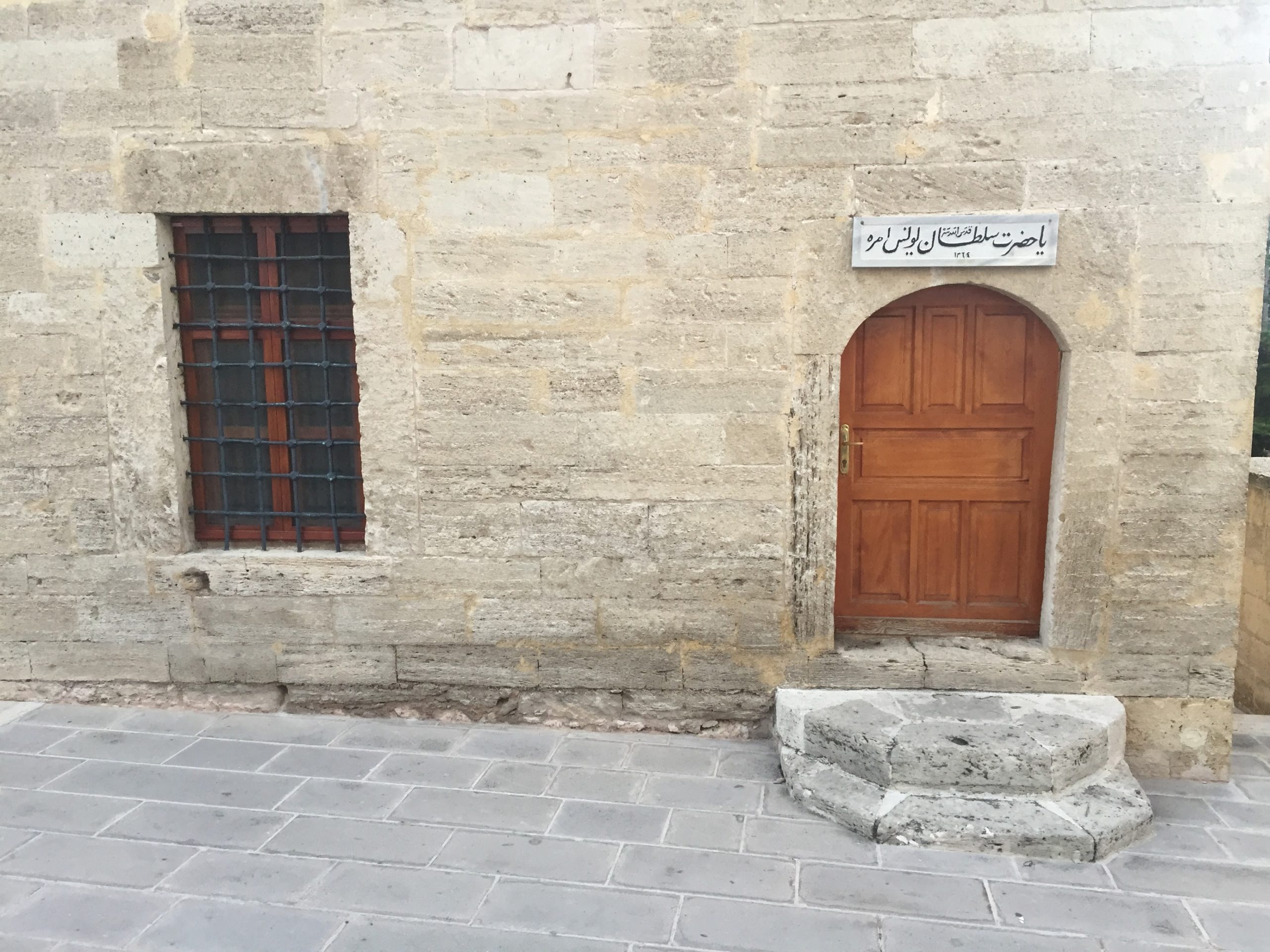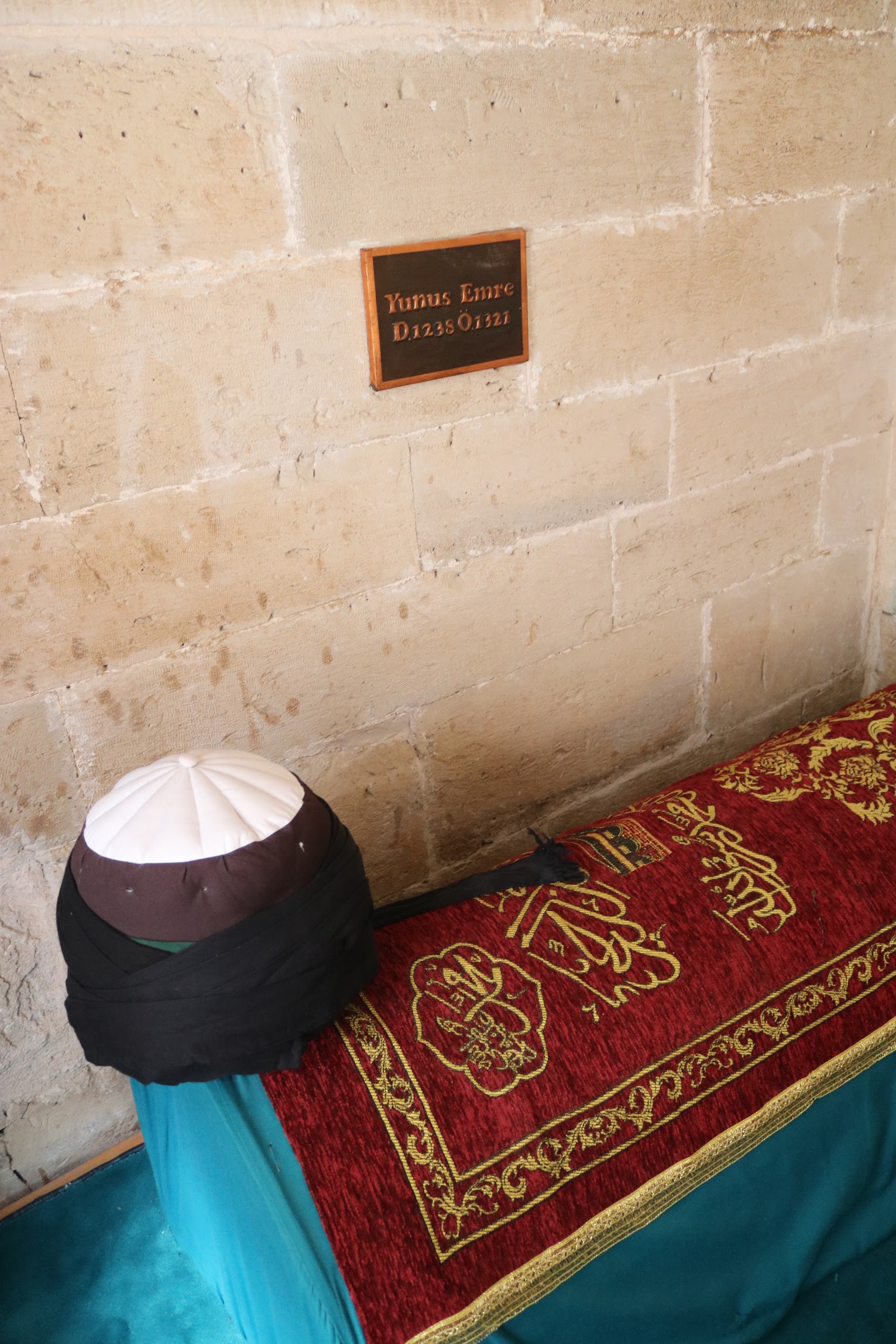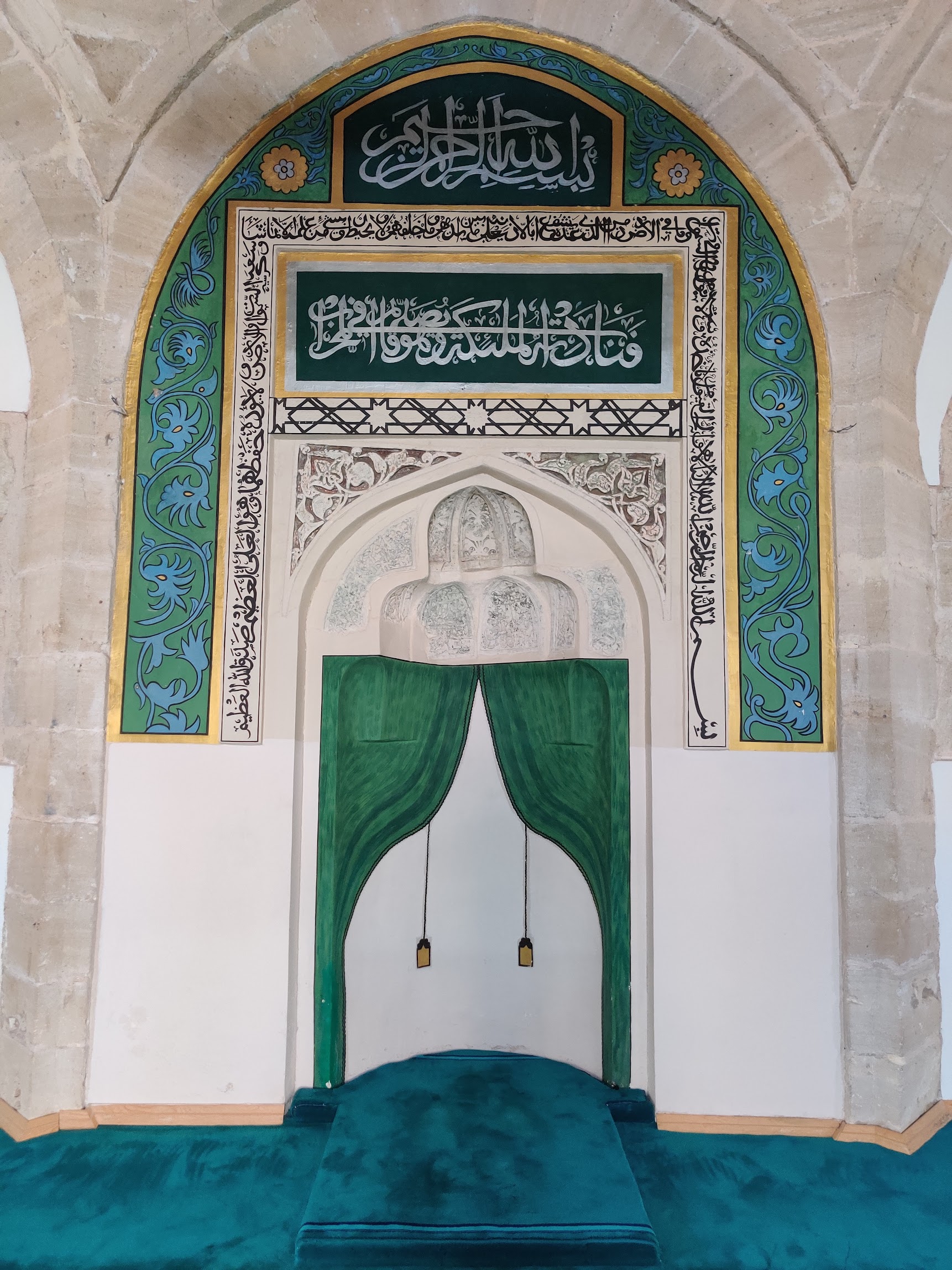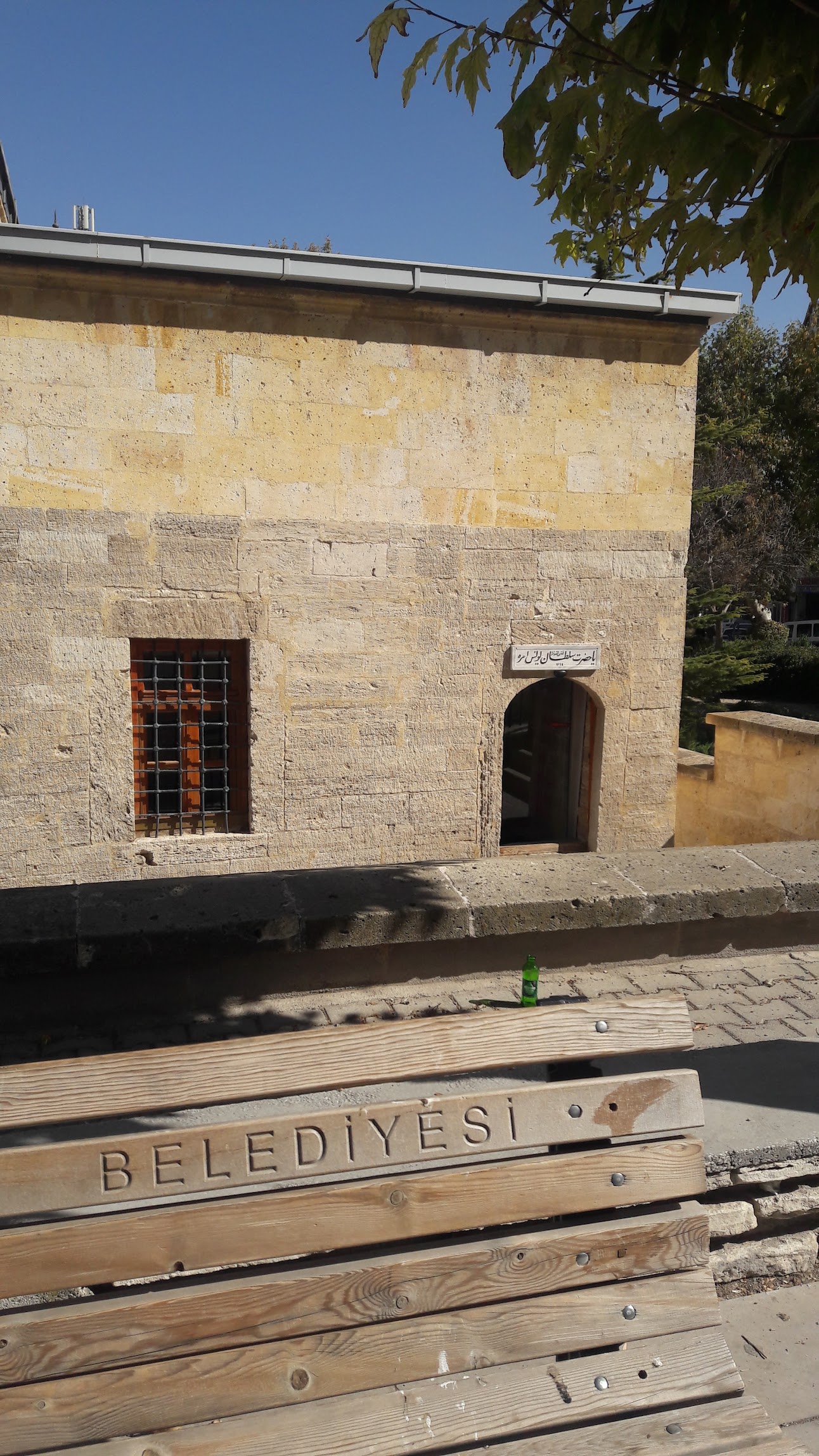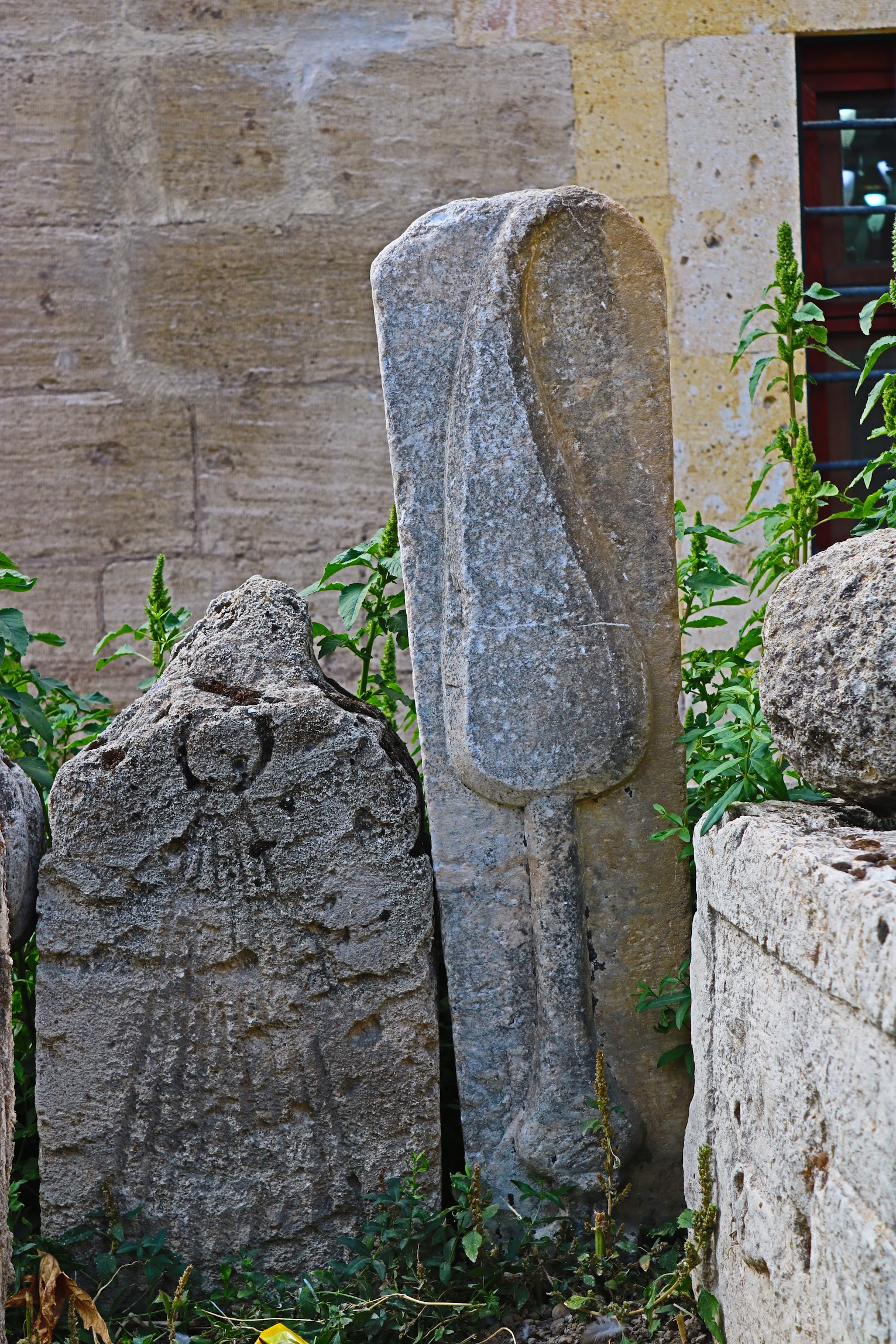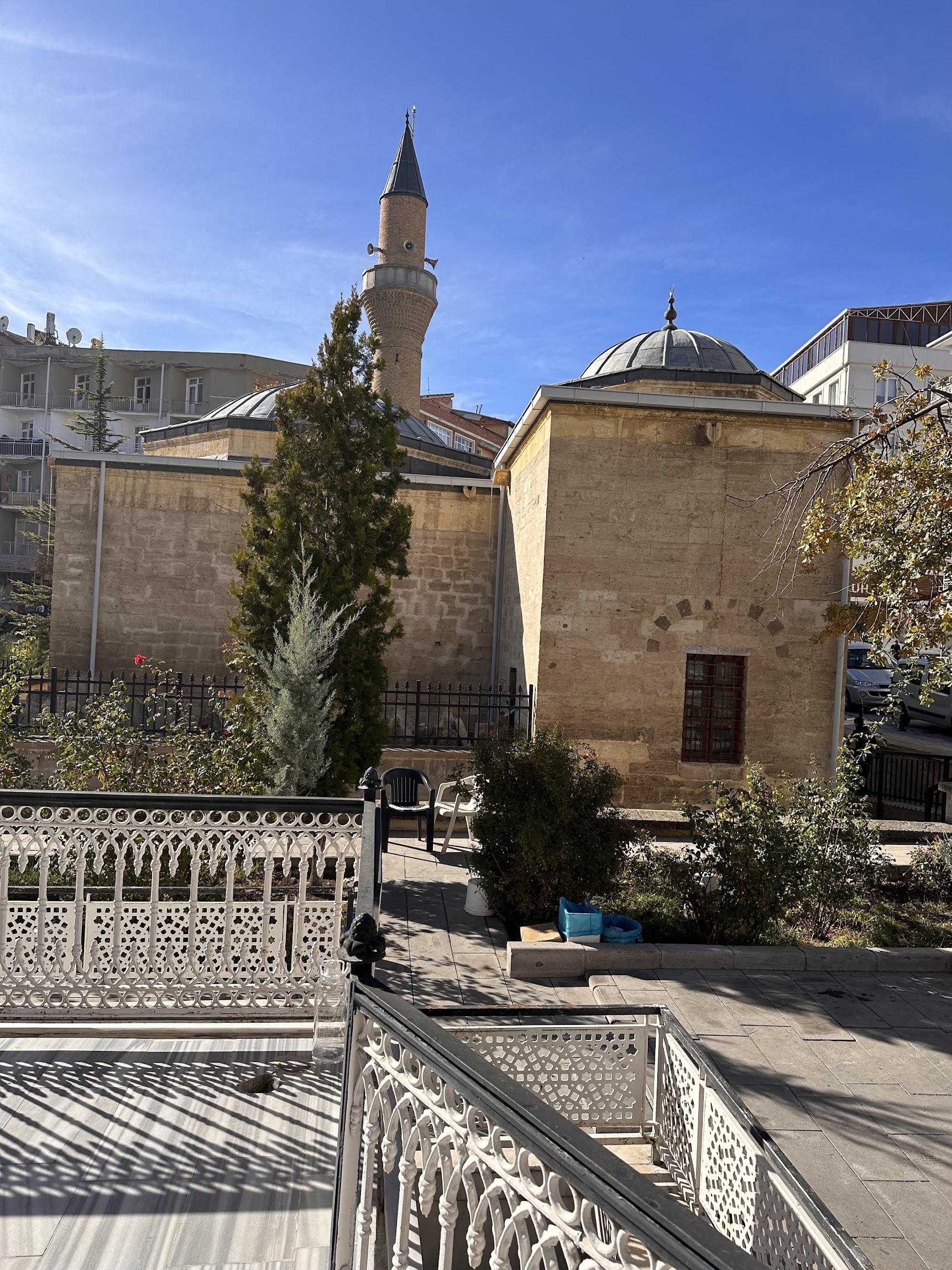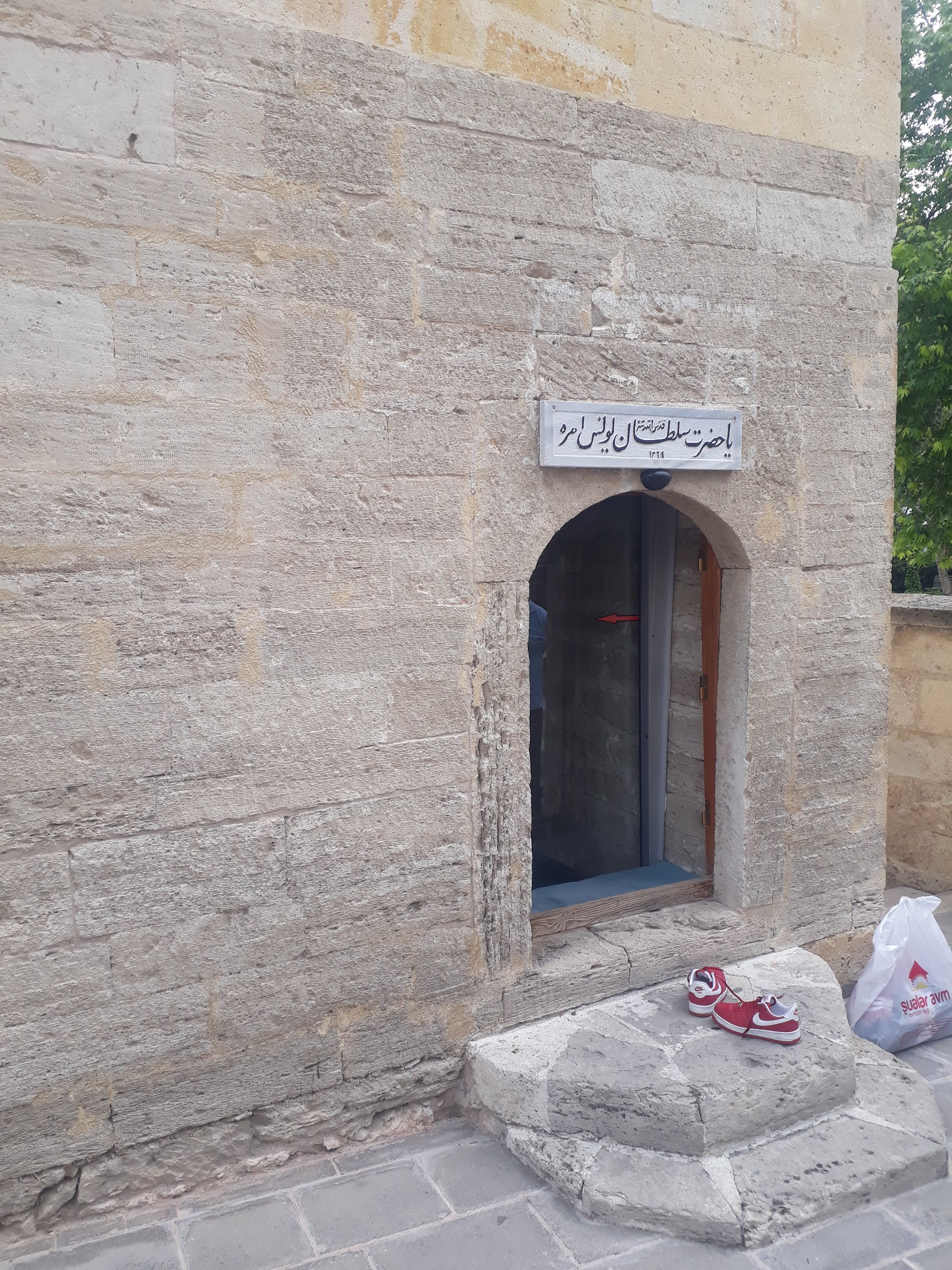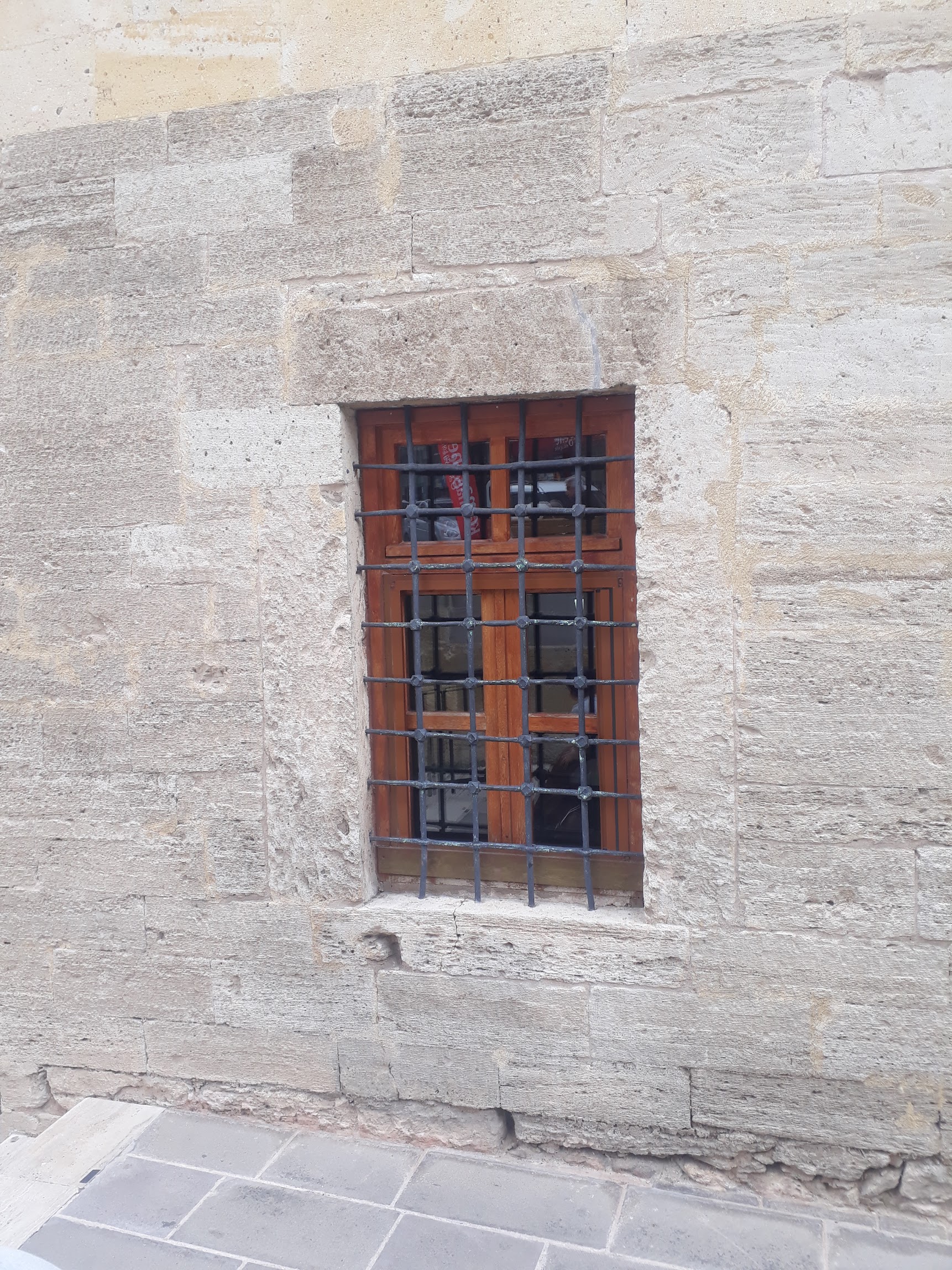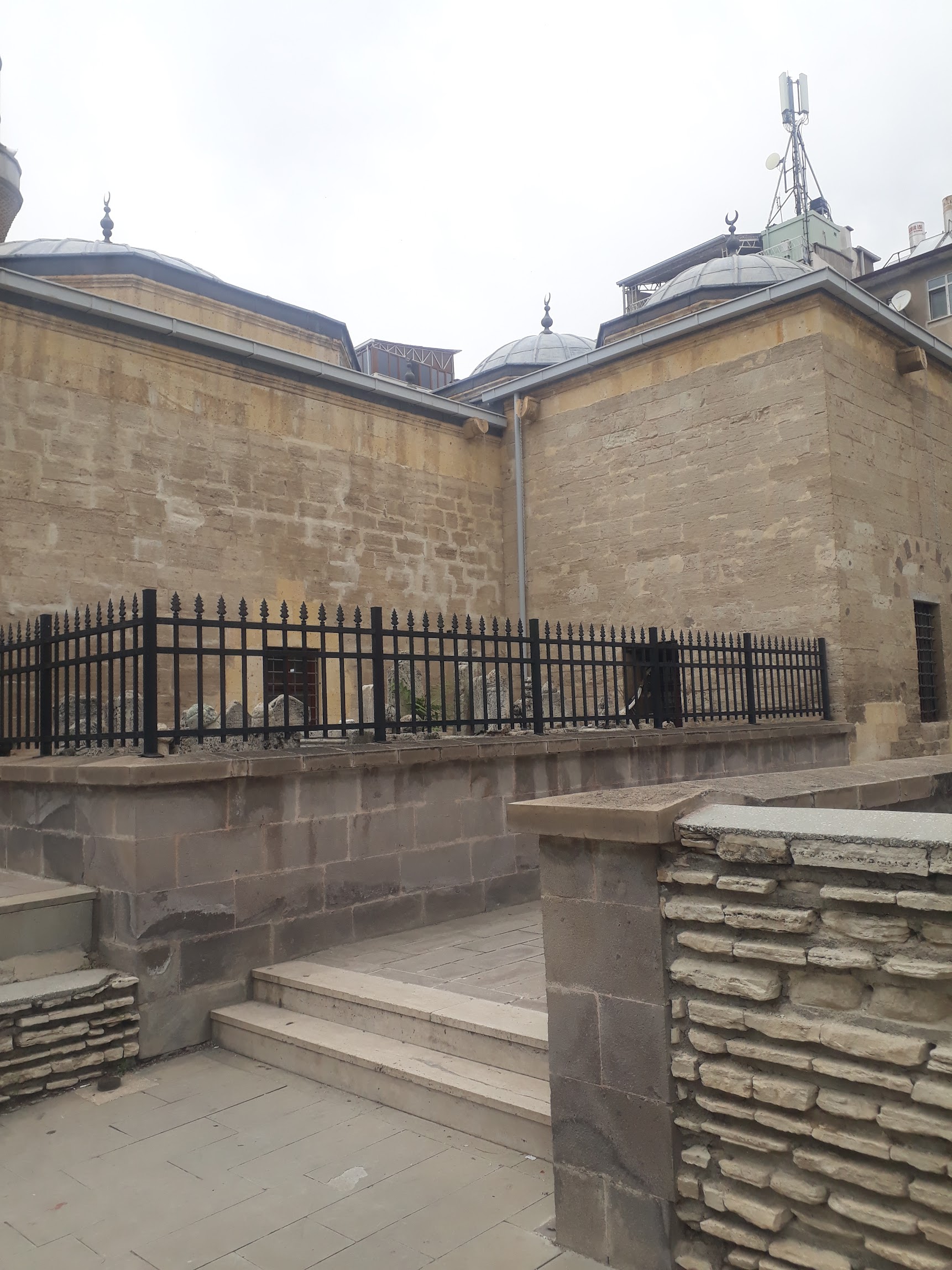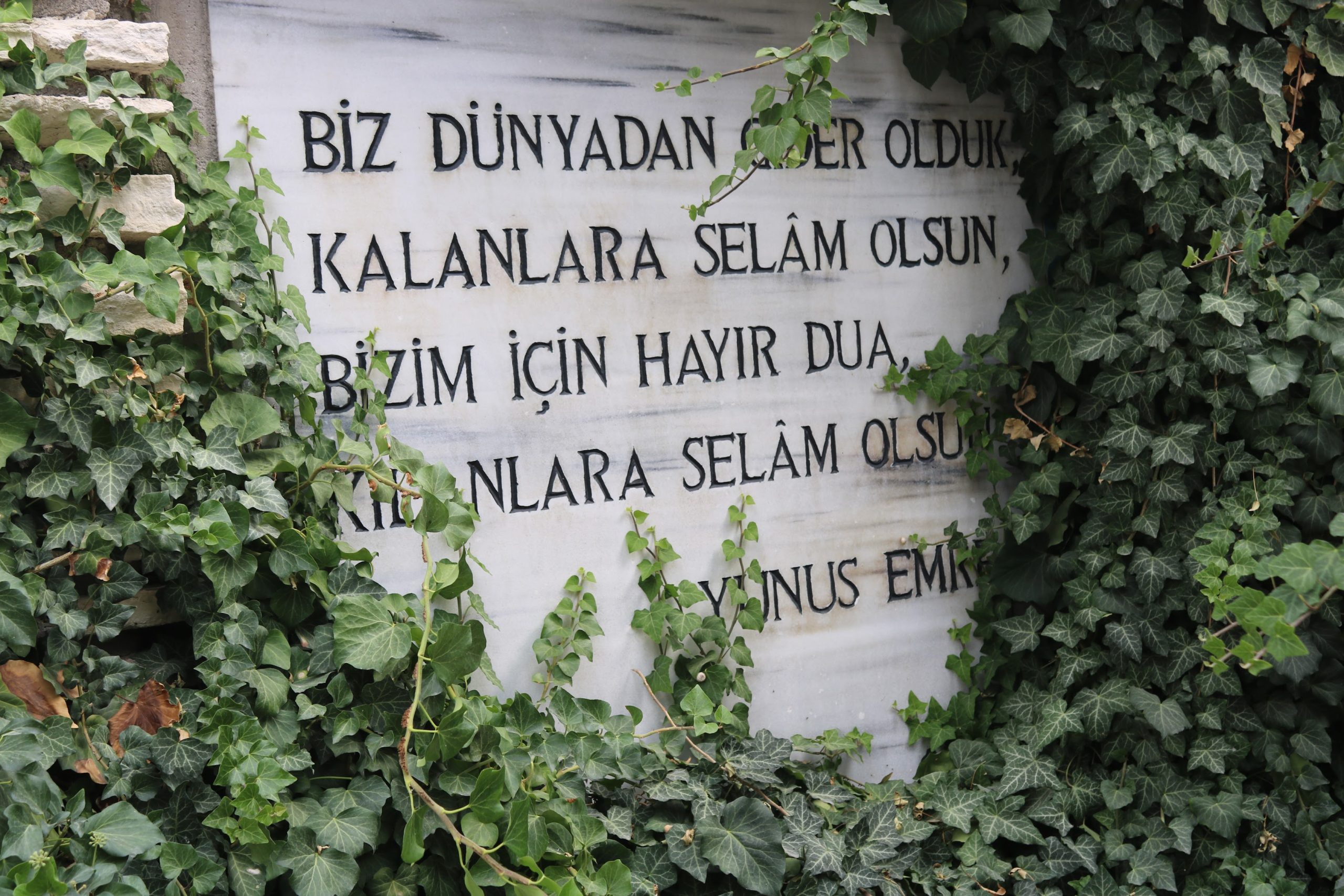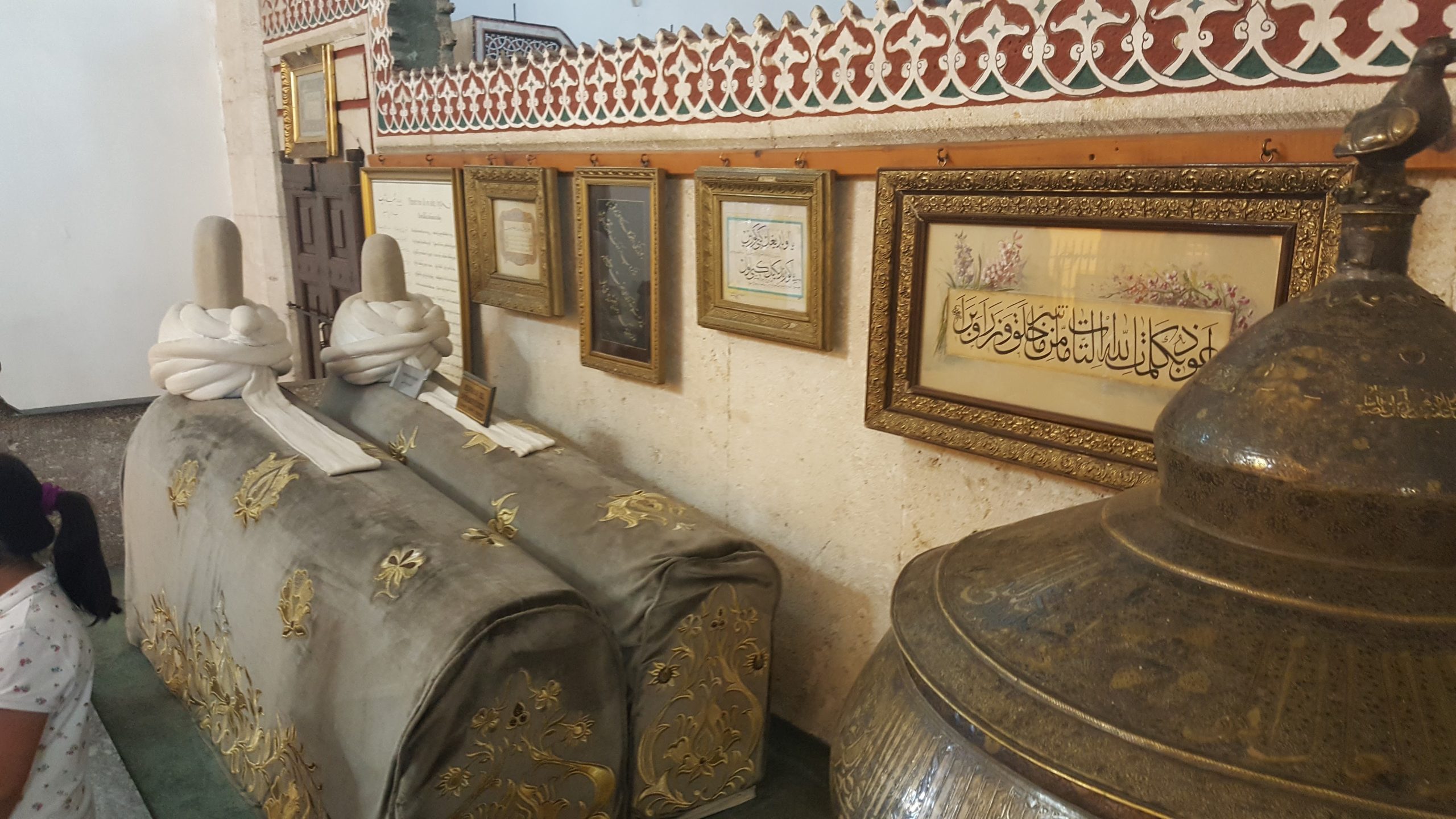The mosque, which belongs to the Karamanoğulları Period, is in Kirişçi District, central Karaman. It is a central domed structure made of cut stone. The narthex is covered with five small domes, oval in the middle and round on the sides, on four columns. To the right of the central dome, there is a rectangular planned dhikr place with two arch openings, and the tomb of Yunus Emre is located next to the western wall.
The name of the neighborhood where the mosque is located is mentioned in very old sources as Sinle Mahallesi, later Kirişçi Mahallesi, and the name of the lodge is mentioned as Kirişçi Baba Zaviyesi. It is known that the building used to be a complex consisting of a tomb, a mosque, a lodge and a cemetery, and that today’s mosque is actually the masjid of the lodge. The structures other than the mosque and the tomb have disappeared over time.



